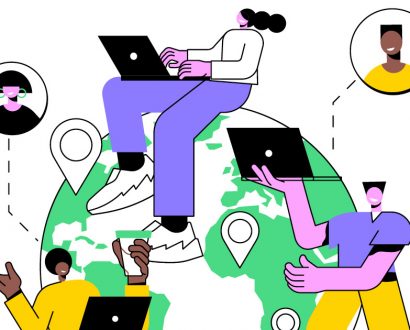You might be surprised at research that reveals a staggering 47 percent of our time is not spent in the present. This has a variety of implications for our working lives.
Apart from anything else, it is hard to imagine how we are going to get things done if we can’t focus and concentrate when we are at work. But there is actually more to consider.
The impact of negative bias
When considering our attention and just where it is, another important factor is our inherent negative bias. Neuroscience tells us that we are significantly more prone to think about negative thoughts than positive ones.
So what does this mean for us at work? When our minds wander, they don’t think about that happy holiday in Fiji or the party we are looking forward to on the weekend. They think about something that has gone wrong in our past or something we are worried about going wrong in the future.

When considering our attention and just where it is, another important factor is our inherent negative bias.
I love the meme, ‘I have 100 problems; 97 of these have never happened.’ I think we can all relate to this scenario. But what is actually happening in these instances is our brain does not recognize these are only thoughts that are not actually happening.
As a result, our body reacts accordingly to this perceived threat and our stress response kicks in. It’s important to note that experiencing stress in brief episodes is natural and even helpful.
However, when this response continues over an extended period, for example the 47 percent of the time when we are not paying attention, it can significantly affect our health and overall wellbeing and lead to burnout.
The workplace reality
How does this play out at work for you? You could be sitting at your desk on any average day with no real concerns, but because you are not in the present, you are not paying attention.
Your mind is wandering and you become concerned about something you said in yesterday’s meeting or worried that you are not going to be able to meet the deadline that is coming up on Friday, which, actually, you are right across.
These thoughts activate your stress response and your adrenaline starts running the show. When this happens you are more likely to respond rather than react. At work this might look like you:
• Snapping at a coworker
• Sending off an email without consideration
• Making decisions that later you question
By having the tools to notice when you are worrying about things that are not actually happening right now, you can return from these ‘worries’ to the present. This will allow your adrenaline to settle and, as result, you have a better chance of responding, not reacting, to whatever is happening at work.
Using these tools of coming into the present will lead to a better day and improved outcomes for you and your team.
Reclaiming our focus
Having understood that our attention is fragmented and the impact on this for our average day at work we need to consider how we reclaim our focus. What are the tools we need to allow us to claw back our attention?
Unfortunately, they often suffer from misunderstanding because that tool is mindfulness, which has become a bit of a buzzword and with that it has lost some of its impact.

By having the tools to notice when you are worrying about things that are not actually happening right now, you can return from these ‘worries’ to the present.
At its core, mindfulness is about paying attention. It enables us to manage our attention and regain control over our thoughts. Below, I’ve outlined some of its advantages in a work setting:
• Focus and concentration: Being fully present at work offers the advantage of being able to focus and concentrate. Given the complex times we are living in, this has never been more important if we are going to find solutions to the challenges we face.
• Respond versus react: Emotional regulation is another benefit. When our stress response is triggered, our amygdala drives emotional reactions that may lead us to react rather than respond. However, when we have the skills to come back to the present, our prefrontal cortex assumes control and we are more likely to respond in a way that considers the long-term consequences of our actions.
• Improved relationships: This naturally translates from emotional regulation with greater control over our emotional responses; we are more likely to have teams that get on and we then create an environment where creativity and innovation can thrive.
Mindfulness in practice
So, now we understand the benefits: what could mindfulness look like for you and your team? There are two facets to consider:
• A dedicated sitting practice
• Its integration into daily routines
When considering mindfulness, you might think about a seated practice where people utilize what is often referred to as an ‘anchor’ to return to the present moment. While for many, this anchor is their breath, it’s important to note that this might not suit everyone.
Fortunately, there are alternative anchors to explore:
• Some individuals concentrate on a specific word.
• Others focus on what they hear, smell, see or feel.
• People might prefer a body scan, observing different parts of their body to stay present.
• Guided meditations, facilitated by various apps, offer another opportunity for coming into the present.
Regardless of the chosen anchor, the fundamental principle remains: whenever the mind wanders, the individual gently redirects it back to the present moment. Through regular practice, individuals train their brains to prioritize focus and attention.
This practice is a bit like going to the gym, where repetition strengthens your attention muscle, which makes it more available to you when you feel you need to claw your attention back.
Integration into daily life
But you can also incorporate mindfulness into your everyday, which I like to call ‘reset and recharge’ moments. Mindfulness is not confined to a 10-minute session in the morning or evening; it can be embedded into our day to manage what I refer to as your ‘general temperature’.
Often, our stress levels rise as the workday progresses, starting perhaps at a calm 1/10 but reaching a stressful 5/10 by lunchtime. Mindfulness practices serve to reset our stress levels, preventing them from escalating unchecked.

This ‘dropping the temperature’ approach puts you in a better position to make better decisions.
Moreover, mindfulness can be particularly beneficial in moments of workplace tension, such as:
• Following a difficult call or meeting
• Encountering a negative email
• Receiving unexpected bad news
During such times, when your heart is racing and stress mounts, these practices can help us reset. I always emphasize to clients that while it won’t eliminate the stressor entirely, we can certainly lower its intensity on us.
This ‘dropping the temperature’ approach puts you in a better position to make better decisions.
Practical mindfulness techniques
So, what might this look like when you are at work?
• Taking a walk, but rather than thinking about whatever is worrying you, you can feel your feet as they hit the ground and notice what is around you.
• Engaging in mindful eating or drinking, noticing each bite or sip with full attention; feel the warmth of the mug, notice the taste. I think we have all finished a cup of coffee and realized we did not actually taste any of it.
• Focusing on deep belly breaths, slowly calming the rhythm of your body.
• Noticing your surroundings – what you see, hear and feel – bringing your awareness to what is around you.
These practices may seem simple, yet this is the point and why they are effective because they are easy and don’t take up too much time. The key lies in consistency and remembering to use them when needed.
I encourage you to think about which one of these might work for you. By incorporating mindfulness into your daily life, you can regulate your ‘temperature’ amid a world that can feel pretty chaotic.
In summary, the benefits of mindfulness to workplaces cannot be ignored. When your people are equipped with mindfulness tools you will have people that can focus and get on.
You will have teams that can collaborate and you will have a better chance of achieving the innovation and creativity that we are all wanting from our teams. This is not a nice to have – this is a must have if we are wanting to keep our people and our teams engaged and thriving at work.







